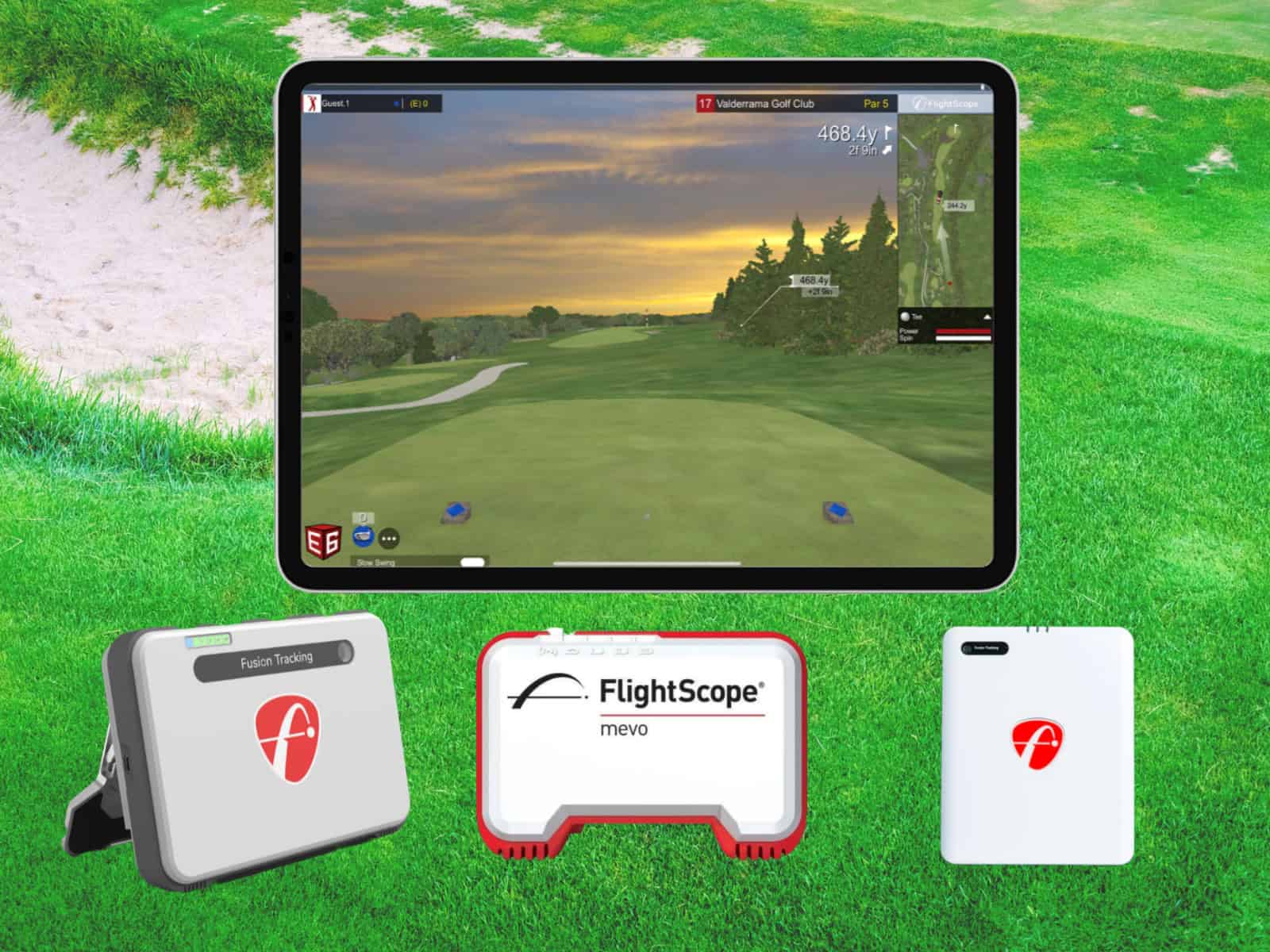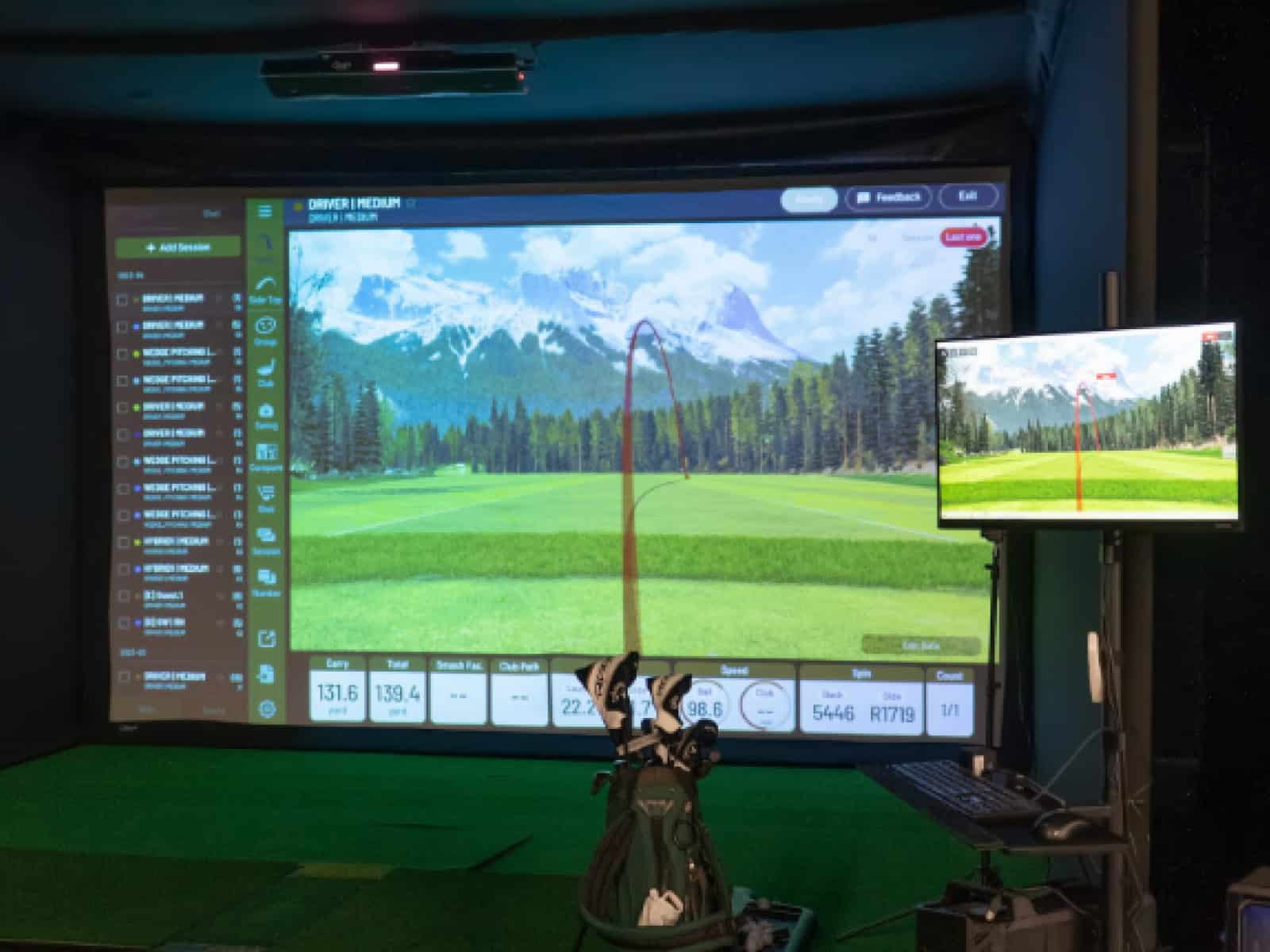Golf simulators have become increasingly popular for home use in recent years. They allow you to play virtual rounds of golf indoors, perfect your swing, and work on your game when you can’t make it to the course. While new home simulator systems can be quite expensive, buying a quality used system can be a great way to get all the benefits of a simulator without spending a fortune.
When shopping for a used simulator, there are a few key things to consider. While some wear is normal, you want to ensure all the hardware and software components are still in good working order.
This article provides an ultimate guide to finding the best value when buying a used simulator for your home. We’ll cover what features are most important, things to look for or avoid, reasonable prices for used simulators, how to thoroughly test a used unit before purchasing, and tips for setting up a used system.
Follow this guide to avoid pitfalls and get the ideal used simulator for your budget and needs.
The Benefits of Owning a Home Golf Simulator
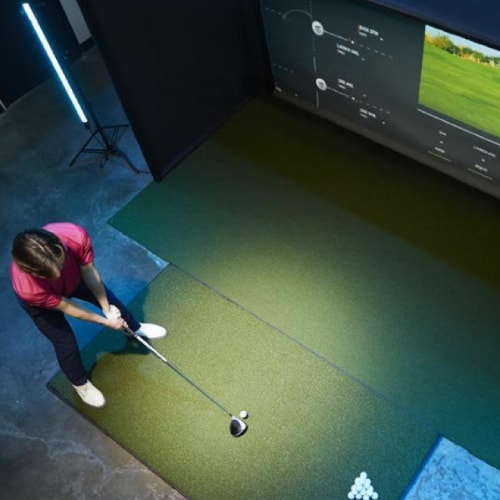
Owning a home golf simulator comes with a plethora of benefits that can enhance your golfing experience. Here are some of the key advantages:
Convenience: With a home simulator, you can play anytime you want, regardless of the weather or time of day. It eliminates the need to travel to a course, saving you time and effort.
Practice and Improvement: A home simulator allows you to practice and improve your skills at your own pace. It provides detailed feedback on your shots, helping you understand your strengths and weaknesses and work on specific areas of your game.
Variety of Courses: Home simulators come with software that offers a wide range of virtual courses. This means you can experience playing on different courses from around the world without leaving your home.
Entertainment: Besides being a tool for practice, a home simulator is also a great source of entertainment. You can play a round with friends and family, making it a fun and engaging activity for everyone.
Why Consider Buying a Used Home Golf Simulator?
While a brand-new home golf simulator may seem appealing, there are several reasons why you might want to consider buying a used one:
Cost Savings: Used sims are typically more affordable than new ones. This can be a significant advantage if you’re on a tight budget but still want to enjoy the benefits of owning a simulator.

Depreciation: Like most technology, golf simulators depreciate over time. Buying a used system allows you to avoid the initial depreciation that occurs when a new simulator is first purchased.
Quality: Many used sims are still in excellent condition and offer the same high-quality performance as new ones. It’s possible to find used packages that have been well-maintained and have plenty of life left in them.
Sustainability: Buying used is a more sustainable choice as it reduces the demand for new products and helps prevent usable items from ending up in landfills.
Things to Know Before Buying a Used Home Golf Simulator
Before you embark on the journey of buying a used home simulator, there are several factors you need to consider. These will ensure that you make an informed decision and get the best value for your money.
The Importance of Research
The first step is to do your research. This involves understanding the different types of simulators available, their features, and how they work. You should also research the market prices of used packages to ensure you get a fair deal. Reading reviews and user experiences can also provide valuable insights into the performance and reliability of different simulators.
Understanding Your Space Requirements
The space you have available in your home is a crucial factor to consider when buying a simulator. You need enough space not only for the simulator itself but also for you to swing the club without any restrictions. The height, width, and depth of the room should be sufficient to accommodate the simulator and allow for a comfortable playing experience.
Budget Considerations
Your budget is another important consideration. The price of used systems can vary significantly depending on their condition, brand and features. It’s essential to set a budget that reflects your needs and expectations. Remember to factor in the cost of any necessary repairs or upgrades, as well as ongoing maintenance costs.
The Role of Technology in Golf Simulators
The technology used in a simulator plays a significant role in its performance and accuracy. Some systems, like Optishot, use infrared sensors to track the ball, while others use radar technology, like systems from Trackman, Flightscope and Garmin (R10). Other big names in the industry, including Foresight Sports, Uneekor, Skytrak, etc. use photometric technology (with high-speed cameras).
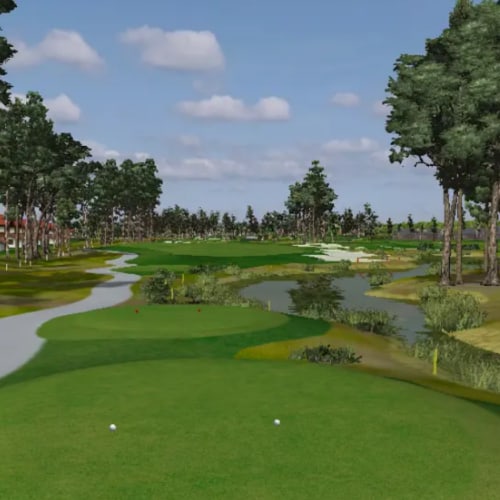
The software of the simulator is also important as it provides virtual courses and analyzes your shots. Make sure the technology of the used simulator you’re considering is up-to-date and compatible with your devices.
Key Components of a Home Golf Simulator
A simulator is a complex system that consists of several key components. Each of these components plays a crucial role in creating a realistic and immersive experience. Let’s explore these components and understand their functions.
The Launch Monitor
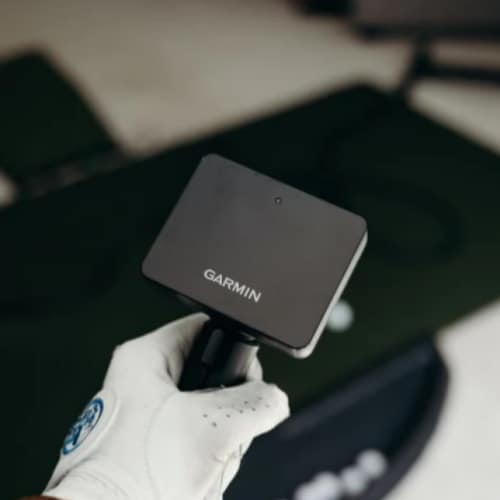
The launch monitor is arguably the most critical component of a home simulator. It’s responsible for tracking the golf ball’s speed, spin, and direction as it’s hit.
This data is then used by the simulator software to calculate the trajectory of the ball and display it on the screen. There are different types of launch monitors available, with varying levels of accuracy and features.
When buying a used simulator, it’s essential to check the condition and performance of the launch monitor, as it’s the heart of the package and the center of the entire virtual experience.
The Golf Mat
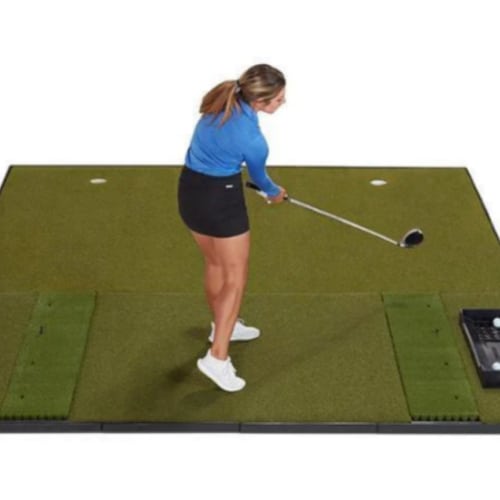
The golf mat is where you stand and hit the ball. It’s designed to mimic the feel of a real course, with different areas for teeing off, hitting from the fairway, and playing from the rough or a sand bunker.
A good mat should provide a realistic feel and feedback, be durable enough to withstand repeated use, and be large enough for you to stand on comfortably. The quality of the mat can significantly impact the overall experience.
The Projector and Screen
The projector and screen bring the virtual course to life. The projector displays the course on the screen, creating a visually immersive environment.
The screen is made of a special material that can withstand the impact of a ball, and it should be large enough to provide a realistic view of the course. When evaluating a used simulator, it’s important to check the quality and resolution of the projector and the condition of the screen.
The Golf Simulator Software
The simulator software is what ties everything together. It uses the data from the launch monitor to simulate the flight of the ball, and it provides a wide range of virtual courses to choose from. The software also offers various features to help you analyze and improve your game, such as shot data, swing analysis, and practice modes. The software should be up-to-date and compatible with your devices (smartphone, tablet, PC, laptop, etc.).
Evaluating the Condition of a Used Home Golf Simulator
When buying a used simulator, it’s important to thoroughly evaluate its condition. This will help you avoid potential issues and ensure that you’re getting a good deal. Here’s how to assess the condition of the key components:
Checking the Condition of the Launch Monitor

When checking the condition of the launch monitor, look for any signs of damage or wear and tear. Test it to see if it’s accurately tracking the ball’s data. If possible, compare its readings with a known reference to verify its accuracy.
Assessing the Quality of the Golf Mat
The mat should be in good condition to provide a realistic feel and feedback. Check for any signs of excessive wear, such as worn-out areas or tears. The mat should also be clean and free of any debris that could affect its performance. If the mat is worn out or damaged, it may need to be replaced, which could add to your costs.
Inspecting the Projector and Screen
Check the quality and resolution of the projector. It should provide a clear and bright image. The screen should be free of any tears or damage. It should also be clean, as dirt or smudges can affect the image quality.
Test the projector and screen to see if they’re working properly and providing a realistic and immersive experience.
Testing the Golf Simulator Software
Check if the software is up-to-date and compatible with your devices. Test its features, such as the virtual courses, shot data analysis, and practice modes, to see if they’re working correctly.
Also, check to see the software’s subscription form. Some options can be bought with a one-time purchase, while others require ongoing annual fees.
Where to Buy a Used Home Golf Simulator
Once you’ve decided to buy a used simulator and know what to look for, the next step is to find a reliable place to make your purchase. There are several places where you can buy a used package, each with its own advantages and considerations.
Online Marketplaces
Online marketplaces are a popular choice for buying used simulators due to their convenience and wide range of options. They also usually offer deals that are physically closer to your home, so you can go and inspect the system in person.
eBay

eBay is a well-known online marketplace where you can find a variety of used simulators. The platform allows you to compare prices, check seller ratings, and read reviews from other buyers. The platform also has systems in place to protect buyers from scams or fraud (like their “Money Back Guarantee”).
2nd Swing

2nd Swing is a specialized online marketplace for golf equipment. They offer a selection of used simulators, and their knowledgeable staff can provide advice and assistance.
Global Golf

Global Golf is another online retailer that sells used golf equipment, including simulators. They offer a trade-in program, which can be a great way to save money if you have old golf equipment to trade.
Golf Simulator Forum

The Golf Simulator Forum is an online community where golf enthusiasts discuss various topics related to simulators. Members often post ads for used simulators for sale.
Local Sporting Goods Stores
Local sporting goods stores often sell used equipment and simulators. Buying from a local store allows you to inspect the simulator in person before making a purchase.
Tips for Safe and Secure Transactions
Regardless of where you choose to buy your used simulator, it’s important to ensure that the transaction is safe and secure. Always check the seller’s reputation, ask for detailed information about the simulator’s condition, and use a secure payment method. If possible, inspect the simulator in person before buying.
Setting Up Your Used Home Golf Simulator
After purchasing a used home simulator, the next step is to set it up in your home. This process involves preparing your space, installing the components, calibrating the simulator, and troubleshooting any common issues that may arise.
Preparing Your Space
Before setting up your sim, you need to prepare the space where it will be installed. This involves ensuring that the room is large enough to accommodate it and allow for a comfortable playing experience. The room should be clean and free of any obstructions that could interfere with the simulator’s operation. You should also consider the lighting in the room, as it can affect the visibility of the projector’s image.
Installing the Components
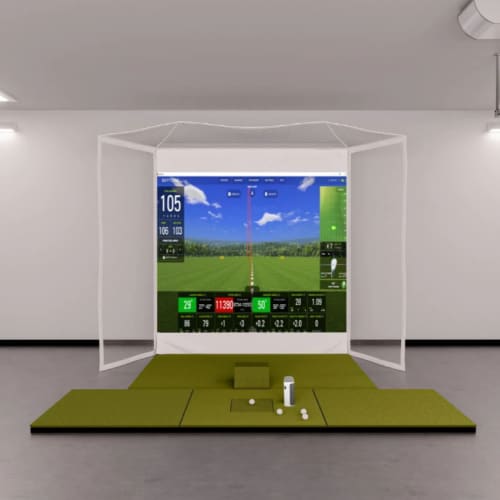
Once your space is prepared, you can start installing the simulator components. This typically involves setting up the launch monitor, golf mat, projector, and screen. Each component should be positioned correctly to ensure accurate tracking of the ball and a realistic display of the virtual course. Follow the manufacturer’s instructions for the installation process, and use the necessary tools and equipment.
Calibrating the Simulator
After installing the components, you need to calibrate the system. This involves adjusting the settings of the launch monitor and the software to ensure accurate tracking and simulation of the ball’s flight. Calibration usually involves hitting a few balls and adjusting the settings based on the results or using a calibration stick.
Refer to the manufacturer’s instructions for the calibration process, as each specific system may require a different calibration method.
Troubleshooting Common Issues
Even with careful installation and calibration, you may encounter some common issues with your new used simulator. These could include inaccurate tracking of the ball, poor image quality from the projector, or issues with the software. Most of these issues can be resolved by checking the setup of the components, recalibrating the simulator, or updating the software. If you’re unable to resolve an issue, consider seeking professional help.
Maintaining Your Home Golf Simulator
Once your used home simulator is set up and running, it’s important to maintain it properly to ensure its longevity and optimal performance. This involves regular cleaning and care, software updates and upgrades, and knowing when to seek professional help.
Regular Cleaning and Care
Like any piece of equipment, your golf simulator requires regular cleaning and care. This includes cleaning the golf mat, projector, and screen to keep them in good condition. The launch monitor should also be kept clean and free of dust or debris that could affect its performance.
Always follow the manufacturer’s instructions for cleaning and care to avoid damaging the components.
Software Updates and Upgrades
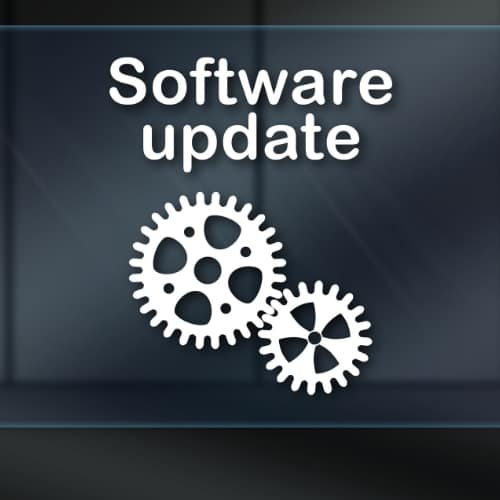
The golf simulator software is a crucial part of the system, and it’s important to keep it up-to-date. Regular software updates can provide new features, improve performance, and fix bugs or issues.
Some software also offers upgrades, which can provide additional features or capabilities. Always check for updates or upgrades from the software manufacturer to ensure that your simulator is running the latest and best version.
When to Seek Professional Help?
While regular cleaning and software updates can keep your simulator in good condition, there may be times when you need professional help. This could be due to a technical issue that you can’t resolve, a component that needs repair or replacement, or a software problem that requires expert assistance. If you’re experiencing issues with your simulator that you can’t resolve, don’t hesitate to seek professional help. This can prevent further damage and ensure that your system is repaired correctly and safely.
FAQs
Let’s now answer some commonly asked questions related to the topic at hand. These will help you gain more knowledge and make the right final decision.
What is the average cost of a used home golf simulator?
The cost of a used home simulator can vary widely depending on its condition, the components included, and the brand or model.
On average, you can expect to pay anywhere from a few hundred to several thousand dollars. High-end models with advanced features can cost more. Always compare prices from different sellers to ensure you’re getting a good deal.
What are the key features to look for in a used golf simulator?
When buying a used simulator, look for key components such as the launch monitor, golf mat, projector and screen, and the simulator software. Check the condition of these components and ensure they’re in good working order.
Also, consider the simulator’s compatibility with your space requirements and the technology it uses for tracking and simulation.
Additionally, look for any accessories and extras that are included with the deal; these can be great (and free) additions to your system.
How can I ensure that a used golf simulator is in good condition?
To ensure that a used simulator is in good condition, inspect it thoroughly before buying. Check the condition of the launch monitor, golf mat, projector and screen, and test the golf simulator software.
Ask the seller about the simulator’s history, including how it was used and maintained. If possible, try out the simulator to ensure it works properly. Usually, an honest seller won’t have any problems letting you test the system before you buy it.
What are the potential issues I might face with a used golf simulator?
Some potential issues with a used simulator could include worn-out components, outdated software, or technical problems. The launch monitor might not track accurately, the golf mat might be worn out, or the projector and screen might not display the virtual simulation clearly. The software might also be outdated or incompatible with your computer.
Always check the simulator thoroughly and ask the seller about any potential issues.
Final Thoughts and Advice
Buying a used home golf simulator can be a great investment, providing you with a convenient and enjoyable way to practice at home. However, it’s important to do your due diligence to ensure that you’re getting a high-quality simulator that’s in good condition and suits your needs.
Remember to thoroughly evaluate the condition of the simulator, check the reputation of the seller, and ensure that the transaction is safe and secure. Once you’ve made your purchase, take the time to set up and maintain your simulator properly to ensure its longevity and optimal performance.
With careful research, consideration, and maintenance, a used home simulator can provide many years of realistic and enjoyable golfing experience.
Many golfers also wonder what technology the professionals rely on for their training. If you’re curious, check out our guide on the golf simulator pros use to see which models are trusted at the highest level of the game.
Good luck!




